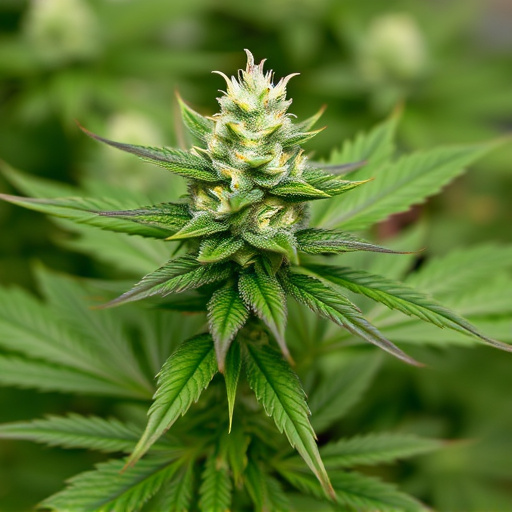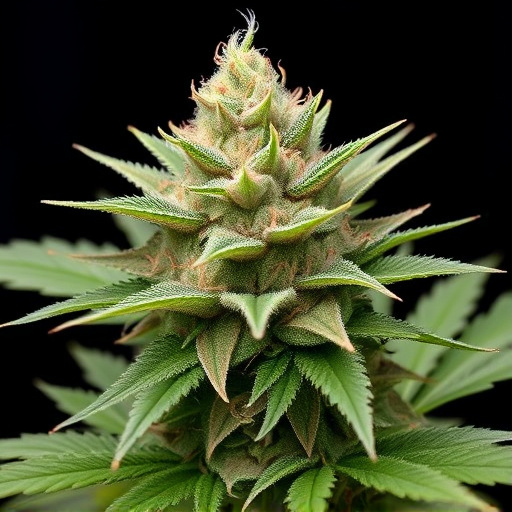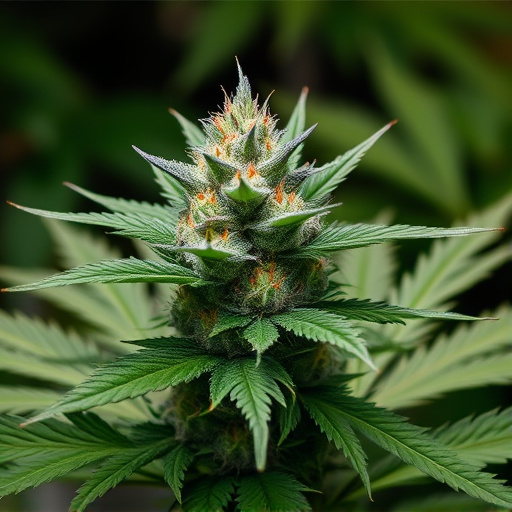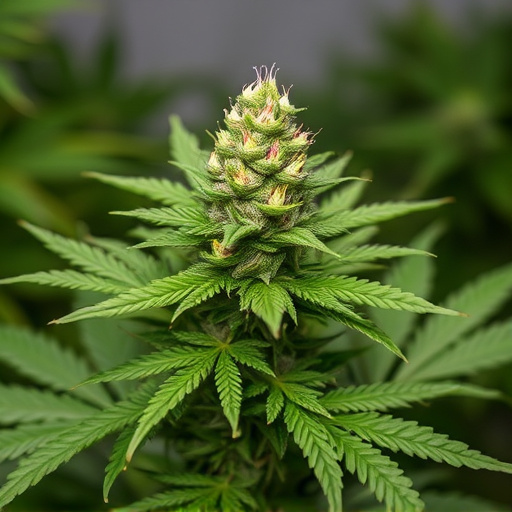Biological factors, including age, weight, gender, health, and genetics, significantly impact the detection times of cannabis compounds, especially in individuals using strains for PTSD treatment. Genetic variations influence enzyme activity and metabolism rates, leading to diverse elimination speeds and potential effects on drug tests. Cannabis tolerance and usage frequency also play a role, complicating interpretation of detection results among individuals with varying body mass index (BMI), metabolism, and liver function. Personalized medicine approaches tailored to individual metabolic profiles may enhance the efficacy and reduce residual effects of cannabis in PTSD management.
“Uncovering the elusive timing of cannabis detection is a complex dance, influenced by a myriad of factors. This article navigates the intricate path, exploring the science behind how biological, strain-specific, and external elements interplay to affect testing outcomes. From genetic predispositions to the impact of specific cannabis strains on metabolism, understanding these variables is crucial, especially for those seeking relief from PTSD, where tailored treatment plans depend on precise detection windows.”
- Biological Factors Influencing Detection Times
- – Genetic variations in metabolism and elimination of cannabinoids
- – Individual differences in cannabis tolerance and frequency of use
Biological Factors Influencing Detection Times

Biological factors play a significant role in determining the detection times of cannabis in an individual’s system, especially among those using cannabis strains for PTSD treatment. The human body metabolizes cannabis compounds differently based on various attributes such as age, weight, gender, and overall health. For instance, younger individuals might eliminate cannabis metabolites faster than older adults due to their more robust metabolic rates. Similarly, people with higher body mass indices (BMIs) can retain cannabinoids longer because of the increased fat cells in their bodies that act as reservoirs for these compounds.
Moreover, genetic predispositions also influence how rapidly the body processes cannabis. Certain gene variations can affect the activity of enzymes involved in metabolizing THC and other cannabinoids, leading to varied detection windows. This is particularly relevant when considering cannabis strains for PTSD, where personalized medicine approaches may become increasingly common, tailoring treatment to individual metabolic profiles for optimal efficacy and minimal residual effects.
– Genetic variations in metabolism and elimination of cannabinoids

The metabolism and elimination of cannabinoids in the body can vary significantly from person to person, largely due to genetic factors. These variations play a crucial role in determining how quickly cannabis is cleared from an individual’s system. For example, certain genetic mutations can affect the activity of enzymes involved in breaking down THC (tetrahydrocannabinol), leading to longer detection times. Individuals with these specific genetic profiles may experience heightened sensitivity to cannabis and its effects, which could be particularly relevant when considering cannabis strains for PTSD treatment.
Research suggests that people with certain gene variants may have reduced levels of CYP2C9, an enzyme responsible for metabolizing THC. As a result, these individuals might have higher blood concentrations of the compound for longer periods, making it detectable in drug tests even after extended use. Understanding these genetic variations is essential when exploring the impact on cannabis detection times and its potential therapeutic applications, such as managing symptoms associated with PTSD through specific cannabis strains.
– Individual differences in cannabis tolerance and frequency of use

Cannabis tolerance and usage frequency significantly influence detection times in individuals. People who regularly use cannabis, especially those with higher tolerances due to frequent consumption or specific cannabis strains for PTSD treatment, may metabolize and excrete cannabinoids at different rates. This variability can extend the time it takes for traces of cannabis to be undetectable.
Understanding individual differences is crucial when interpreting cannabis detection results. Research suggests that factors such as body mass index (BMI), metabolism, and liver function also play a role in determining how quickly cannabis metabolites are cleared from an individual’s system. Given these variables, what might be considered a long detection time for one person could be typical or even shorter for another.
In conclusion, understanding the factors that influence cannabis detection times is crucial, especially when considering its potential therapeutic applications, such as using specific cannabis strains for PTSD. Genetic variations and individual differences play a significant role in determining how quickly cannabinoids are metabolized and eliminated from the body. This knowledge can help individuals make informed decisions about their cannabis use and enable healthcare professionals to offer personalized guidance regarding detection times.














